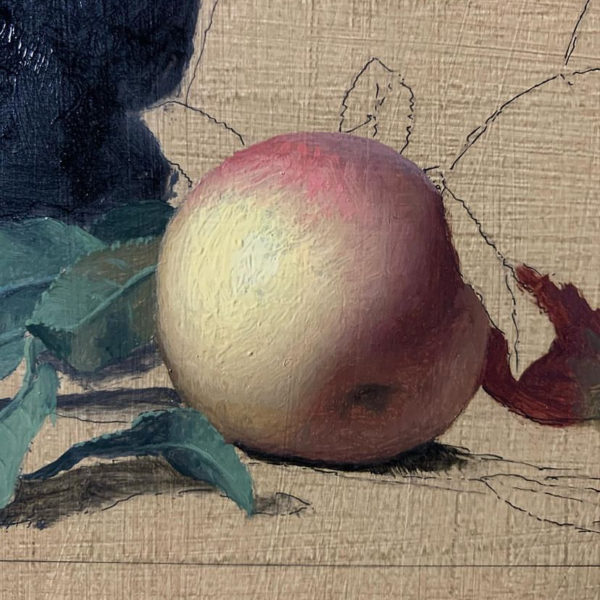Dutch Still Life Painting

Justin Wood
August 5 – 9, 2024 (Monday – Friday, 10am – 5pm)
Schedule: 10am – 1pm workshop; 1-2pm lunch; 2 – 5pm workshop
Limit: 12 students
Tuition: $875 ($437.50 deposit upon enrollment)
Tuition balance is due by July 1, 2024.
Course Description
This workshop is inspired by the Dutch Breakfast Still Life (Ontbijtjes). This type of still life painting developed in the 17th century and while the word “ontbijtjes” is Dutch for breakfast, it was more thought of as “a light meal taken at any time of day”. The Breakfast Still Life is characterized by the display of everything from common everyday foods and items to rare delicacies and luxury goods such as roemers (wine glasses), silver/gold goblets, and chinese porcelain bowls. Still life paintings in this genre ranged from small and simple to large and complex with a variety of meanings, both literal and symbolic. The range of meanings included straight forward tributes to nature and finely crafted wares to moral and religious warnings against excess.
The paintings were created using very specific procedures. They first executed a careful and accurate line drawing of the scene. This drawing was transferred to canvas or a panel and then toned a light gray or brown. The artist then completed the dead coloring (dood-verf) which was a transparent underpainting that would establish the general tones and colors needed to describe each object. Some artists did their dead coloring with full color and some did it with just brown and white. We will use the latter method and limit our palette to brown and white. Once this layer is dry, the process of “working up” (opwerken) began. In this stage, the artist precisely defined each form to completion. They were careful “not to apply paint too heavily, but thin and sparingly, elegantly laid, glowing and pure.” If, when this layer dried, some revisions and final touches were needed, they would do it at this time. There were, of course, different interpretations and versions of this method, but generally, most of the still life artists of that time period worked in some variation of the previously described process.
Due to the time limitations and the importance of experiencing the entire production process, I want everyone’s still life to be simple. The size of the painting should be between 8×10 and 11×14. I recommend you choose a few pieces of produce (lemons, oranges, grapes, olives, etc.) with a bowl, plate or cup, etc. Metal objects (steel, silver, pewter, copper) are great but avoid high polish. Bread works well too and comes in many varieties. You can also include a piece of fabric, such as a white napkin or tablecloth. If your fabric has a pattern, it should not be too complex.
We will spend the first day setting up our compositions, drawing and transferring. The second day will be used to complete the grisailles. The remainder of time will be spent completing each part with color. I will work with everyone individually throughout the week and will paint alongside the artists on my own still life.
All levels welcome although some prior experience drawing & painting is helpful.
